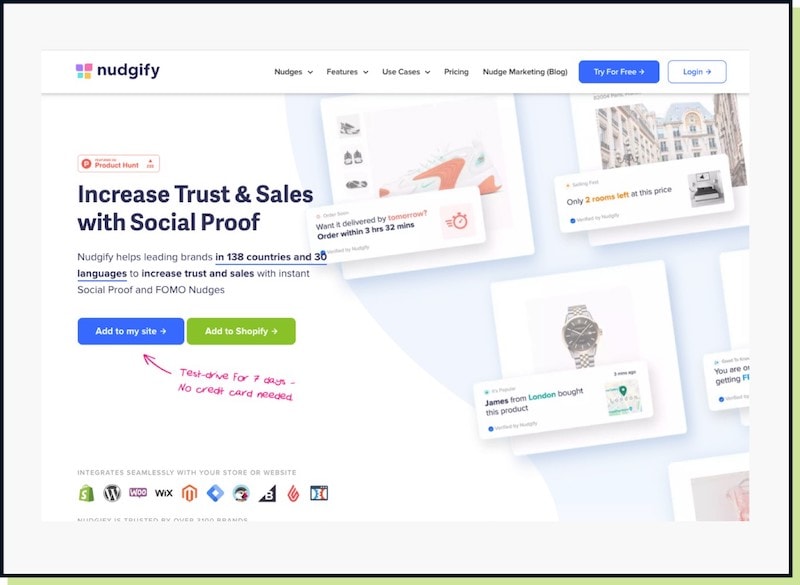Could Using FOMO (Fear of Missing Out) On Your Website Boost Sales?
Could implementing nudge or social proof banners to your website help increase conversions and sales, by creating FOMO?

Oops! We could not locate your form.
Could implementing nudge or social proof banners to your website help increase conversions and sales, by creating FOMO?

So you’re planning on going to a festival. You and your pals each jump on the website to buy your tickets before they sell out, and you see a banner appear at the bottom of the screen that says 250 people have purchased tickets in the last hour.
You panic.
What if they sell out? What if I miss out and my friends get tickets?
This fear is what can drive sales.
How many times have you bought anything on or offline when you’ve seen a queue outside or know that something is popular or a bargain? Because everyone wants it, it must be good.
Look at the demand recently for Prime drinks. It’s popular, catches on and everyone wants a piece of the action (and no I haven’t tried one).
People don’t tend to like to miss out, and when shown a banner that says that something is popular and there’s potentially limited availability, more people are likely to react.
This week’s Swipe & Deploy is looking at social proof or banners that provide nudges and encouragement for users to continue their journey.
FOMO notifications, commonly referred to as social proof or nudge banners, are third party tools that work with your website to display data to entice your website users to act.
Whether that is to create scarcity, urgency or to simply build credibility knowing that others are committing to purchase or enquire.
People like following the crowd, we are like sheep. We don’t like to admit it, but we feel more confident buying something if other’s have done it before. It’s why we seek our friend’s approval or recommendation on items we buy.
We seek out reviews and want to read testimonials for products, to validate an enquiry or online purchase.
FOMO notifications can bring the testimonial, review or feedback directly to your users on core pages in their website journey. Providing confidence or reassurance that they are in the right place to solve their challenge or problem.
These banners can be displayed with all kinds of messaging. Listing the current number of users on the website, the number of products purchased, recent subscribers, recent subscriptions or the number of products remaining.
Displaying customer reviews is probably one of the most common forms of social proof, but depending on the tool used, the integration and the customisation options, the majority of these tools all deliver very similar outcomes.

So there are many of these tools on the market and some have been around for a while, but here are a few I came across whilst writing this article.



Yes! Although these are most commonly seen on e-commerce websites, they are becoming more frequent on service led websites and B2B websites too.
For examples of use cases, Proof are implementing them on:
Or just showcasing customer reviews or testimonials in an eye-catching way.
This might be a question many of you are wondering – do the 3 tools mentioned above work with WordPress? Our survey says ding, ding ding, top answer.
Yes, they either have a plugin or work with WordPress and WooCommerce. Some differ on how they work and what they’ll display, so further research before choosing your tool will be beneficial.
The key takeaway today is, regardless of your industry or website type, would deploying some FOMO work for your website? Would you see more conversions, more leads, more downloads and email signups?
As with anything, exploring and learning the platform might take time, but customising a journey that could display the right message at the right time could create the right social proof that your user needs to sign up.
That’s a wrap for Swipe & Deploy #41. Join me next week when I’ll share another insight or piece of inspiration from around the web.


Whether you are visiting a theme park, zoo or any other type of visitor attraction, there's usually some form of map that customers can download from the attraction's website, that details how they can get around on the day.
 James Coates
James Coates

Whether you're in the 'it's ok to put up your decorations in November' camp or strongly feel that 'December is the date for Christmas decorations', your website is another place that can be decorated with festive touches. If you want to start in November, we won't judge!
 James Coates
James Coates

For publishers and websites that rely on advertisement money to support their commercial income, browser AdBlockers, privacy specialist browsers and rejecting Cookie Consent issues can cause an absolute nightmare.
 James Coates
James Coates